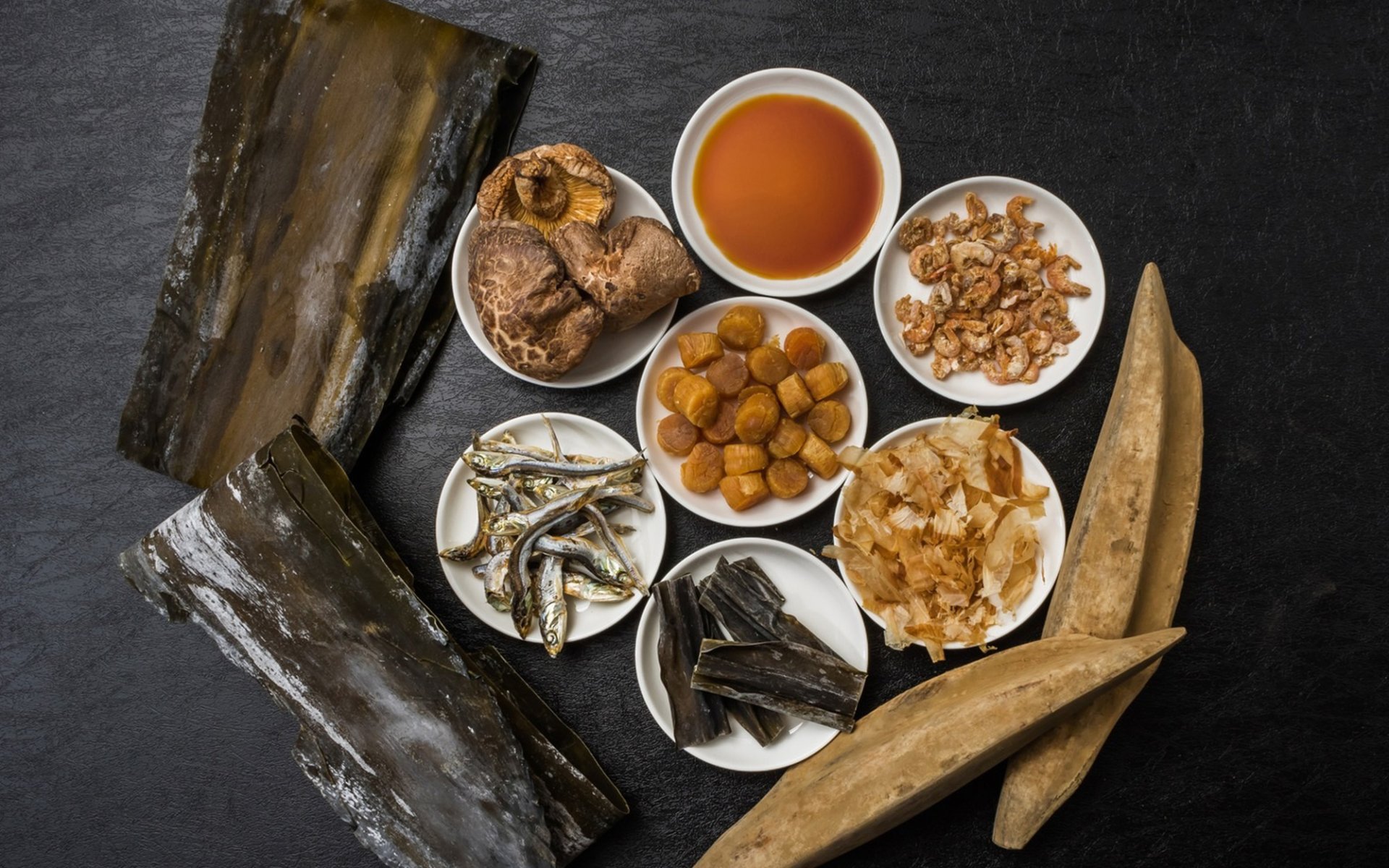Dashi

In Japanese culture, Dashi refers to a seasoning in the form of a broth or stock. It's widely used in various Japanese dishes to enhance their flavor and depth. In fact, Dashi can be made from a variety of ingredients, including Kombu (kelp), Shiitake mushrooms, Katsuobushi (dried bonito flakes), Niboshi or Iriko (dried small fish), and dried mackerel and sardines. Today, Rimping Supermarket will take you deep into the crucial essence of Japanese taste.
The Origin of Dashi: From the Jomon Period to the Heian Court
The origin of Dashi can be traced back to ancient Japan during the Jomon Period, 16,000 to 3,000 BCE. It stemmed from the concept of extracting flavors from fish and seaweed. However, this concept was not unique to Japan, as similar practices existed in many other East Asian cultures.
During the Jomon Period, the Japanese lived by hunting and gathering various plants. Some of these plants had bitter and unappetizing flavors when consumed raw. For this reason, people in that era began to boil vegetables and meats, discovering that these foods tasted much better after cooking. This discovery is considered the starting point of Dashi.
However, historical records indicate that the use of Kombu (kelp) to make Dashi dates back to the Heian Period (794-1185). It became immensely popular in the imperial court, with recipes appearing in Japan's oldest dictionaries. In that era, Kombu was referred to as Hirome or Ebisume. Furthermore, during the Heian Period, there are also written accounts of using Katsuobushi (dried bonito) to make Dashi.
The Evolution of Dashi in Later Eras: Diverse Options
Later, in the Muromachi Period (1336-1573), Shiitake mushrooms began to be used for Dashi, offering a vegetarian alternative. Dried shiitake mushrooms were commonly combined with kombu to create another form of Dashi with a rich and robust flavor.
During the Edo Period (1603-1867), Dashi developed into a significant staple of Japanese culture, with various recipes published in cookbooks. Dashi gained immense popularity, causing Kombu and Katsuobushi to become very expensive and difficult for ordinary people to acquire. Consequently, the general public began to widely use Iriko (dried small fish) as a substitute for Katsuobushi.
Later, in the Meiji Period (1868-1912), Katsuobushi production increased in other regions, but it still remained expensive for many. This led to the adoption of dried mackerel and sardines as substitutes, starting in Osaka and then spreading throughout the country.
Dashi Today: An Accessible Heart of Cuisine
Today, Dashi continues to be a fundamental base that enhances the flavor of various dishes, including miso soup, ramen, udon, and various simmered foods. Furthermore, modern culinary innovations have made Dashi easier to consume, with instant Dashi available in powdered, sachet, or concentrated liquid forms, eliminating the need for time-consuming traditional preparation. As a result, Dashi has become easily accessible in many households, transcending Japan's borders to become known in numerous countries worldwide.


